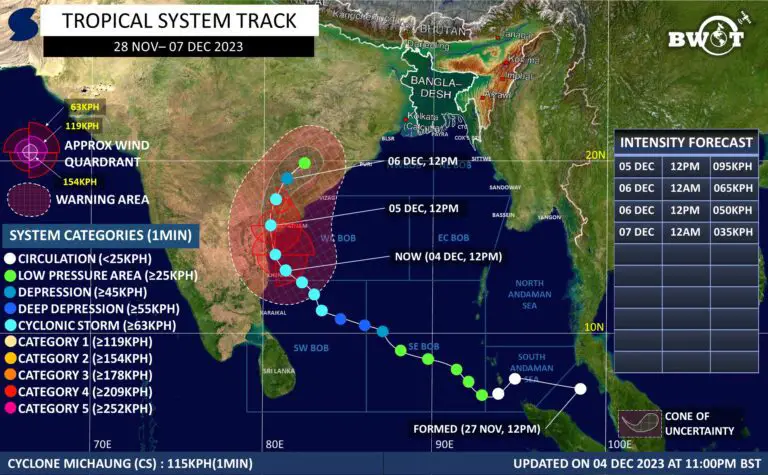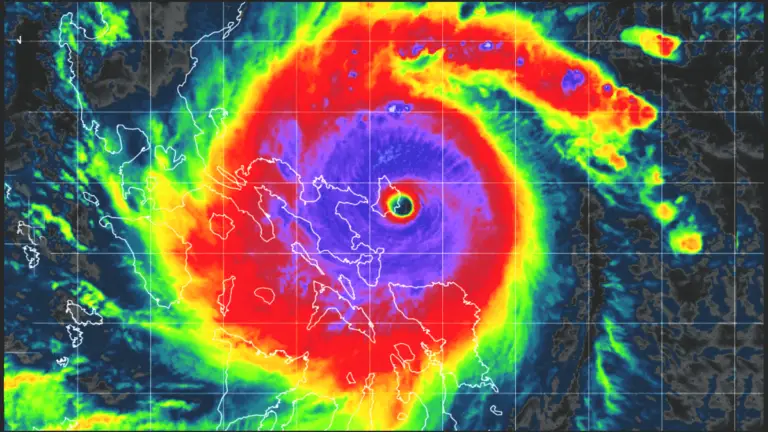
Monster Typhoon Tip: The Record-Breaking Superstorm
Introduction of Monster Typhoon Tip:
In the annals of meteorological history, few phenomena loom as large as Typhoon Tip, also known as Super Typhoon Tip. This formidable cyclone etched its name into the record books with its unparalleled intensity and vast size. Let’s delve into the captivating story of this extraordinary storm.
Formation and Rapid Intensification of Typhoon Tip
Monster Typhoon Tip’s genesis can be traced back to a disturbance in the western Pacific Ocean, emerging as a tropical storm on October 4, 1979. Swiftly gaining strength, it escalated into a typhoon and ultimately transformed into an immensely powerful super typhoon.
Typhoon Tip Intensity: A Force to Reckon With
On October 12, 1979, Typhoon Tip reached its zenith, boasting maximum sustained winds of approximately 190 mph (305 km/h) and a minimum central pressure plummeting to an astounding 870 millibars. This formidable tempest stands unrivaled as the most intense tropical cyclone ever recorded, both in terms of wind speed and atmospheric pressure.
The Gigantic Girth
One of Typhoon Tip’s most striking attributes was its colossal size. Its sprawling cloud cover spanned an astonishing diameter of around 1,380 miles (2,220 kilometers), earning it the distinction of being the largest tropical cyclone ever observed.
(Code 3: 24)
Track of Typhoon Tip
Monster Typhoon Tip charted a west-northwestward course across the western Pacific, skirting south of Guam before veering north-northeastward.
Impact: Limited but Noteworthy
Despite its immense magnitude, Typhoon Tip mercifully spared heavily populated regions from widespread devastation. As it approached Japan, the storm weakened, confining its fury to more localized areas.
The Naming Legacy of Typhoon Tip
The Name “Tip” was bestowed upon the typhoon as per the Western Pacific naming convention. Tropical cyclones in the region receiving designations from a roster curated by the Japan Meteorological Agency.
Shaping the Saffir-Simpson Scale
While Typhoon Tip’s direct impact on human settlements was minimal, its sheer ferocity spurred a pivotal development in hurricane classification. The Saffir-Simpson Hurricane Wind Scale expanded to include Category 5, acknowledging storms with sustained winds surpassing 155 mph (250 km/h), a testament to the extreme potency witnessed in Typhoon Tip.
Conclusion: Lessons Learned
Thankfully, Typhoon Tip’s path spared major population centers from its full wrath, underscoring the critical importance of vigilance in monitoring and forecasting such formidable storms. As we reflect on the legacy of Typhoon Tip, let it serve as a reminder of the profound impact these natural juggernauts can wield and the ongoing imperative to enhance our preparedness and resilience in the face of nature’s fury.
Read More
Strongest Earthquakes of All Time (10+)
The Most Significant World Weather Today
Damage and Fatalities of Typhoon Tip
Typhoon Tip was a monster of nature, a colossal storm that etched its name into the annals of meteorological history. In the autumn of 1979, it roared across the western Pacific with terrifying force, leaving a trail of destruction and despair in its wake.
The damage wrought by this behemoth was staggering, matched only by the heartbreaking toll it exacted on human lives.
As Tip unleashed its fury upon the unsuspecting islands and coastlines, buildings were reduced to rubble, trees were uprooted like matchsticks, and roads were swallowed by torrents of water.
Entire communities found themselves at the mercy of the tempest, their homes and livelihoods swept away by the relentless onslaught. The landscape was transformed into a landscape of desolation, scarred by the raw power of nature unleashed.
But perhaps the most tragic consequence of Typhoon Tip was the loss of life it brought in its wake. Despite the best efforts of emergency responders and volunteers, the storm claimed hundreds of souls in its relentless march across the Pacific.
From drowning in swollen rivers to being crushed beneath the debris of collapsed buildings, the ways in which people met their end were as varied as they were cruel. Each loss was a devastating blow to families and communities already reeling from the chaos wrought by the storm.
(Code 4: 40)
Aftermath of the destructive Typhoon
In the aftermath of Typhoon Tip, as the world took stock of the destruction and despair left in its wake, it served as a stark reminder of the awesome power of nature and the fragility of human life in the face of such forces.
But amidst the grief and devastation, there also emerged stories of resilience and hope, as communities banded together to rebuild and recover in the wake of tragedy. And though the scars left by Typhoon Tip may never fully heal, they serve as a testament to the strength of the human spirit in the face of adversity.
Advertisements


